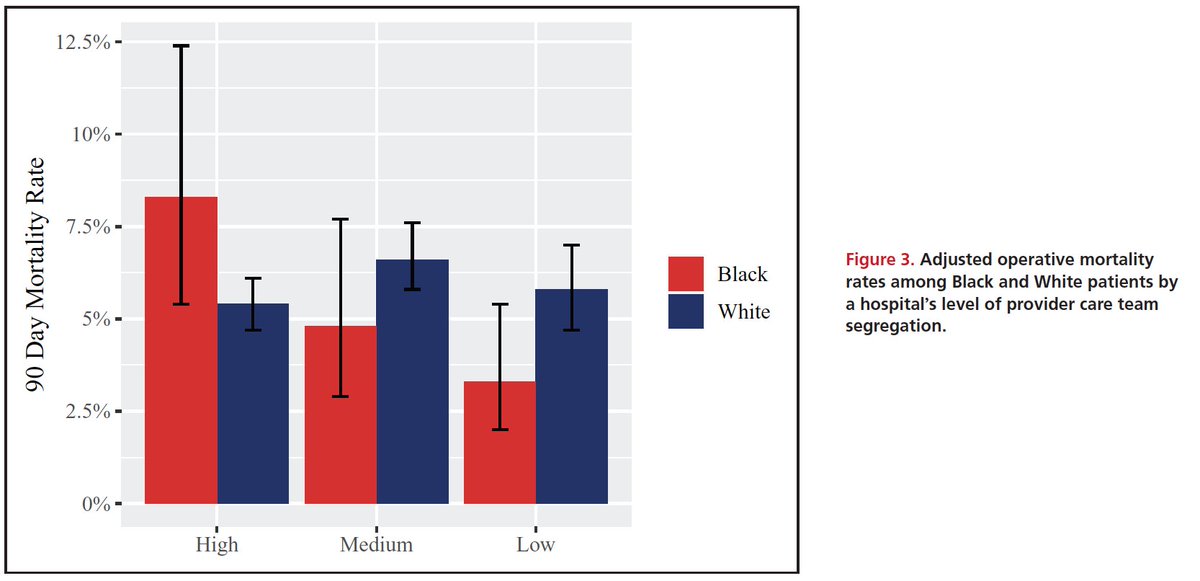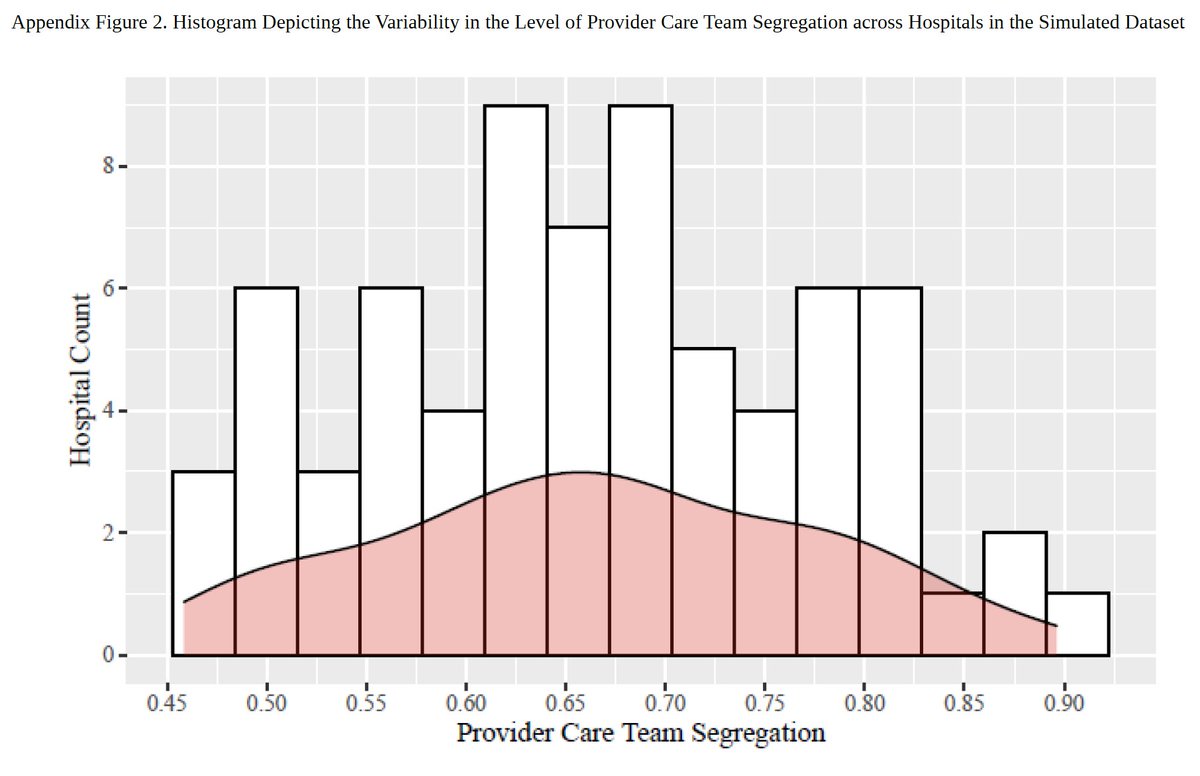
De jure segregation within US hospitals ended in the 1960s.
But does de facto segregation still exist? And if it does, is it related to outcomes?
Questions posed in a paper led by @dorkstweet with @AkbarWaljee @ekownyankah.
1/
But does de facto segregation still exist? And if it does, is it related to outcomes?
Questions posed in a paper led by @dorkstweet with @AkbarWaljee @ekownyankah.
1/

Extensive prior work has shown outcome differences between Black & White patients after surgery due to patient & hospital factors. In this paper, for example, Black patients undergoing CABG were sicker & more often treated at low-volume hospitals.
2/
ahajournals.org/doi/full/10.11…
2/
ahajournals.org/doi/full/10.11…
Our question was subtly different from this earlier work.
We asked: Are Black & White patients WITHIN the same hospital cared for by different teams of providers.
That is: Does "hidden" segregation happen in hospitals?
3/
We asked: Are Black & White patients WITHIN the same hospital cared for by different teams of providers.
That is: Does "hidden" segregation happen in hospitals?
3/
“Hidden" segregation is described in other settings. For example, a report last year found WITHIN school segregation in NC increased even as BETWEEN school segregation decreased, i.e., students concentrated into certain classes by race.
4/
edweek.org/leadership/hid…
4/
edweek.org/leadership/hid…
We wondered if something similar is happening in US hospitals. We chose CABG to study as it often involves complex provider teams & we previously found team interactions may be linked to outcomes.
5/
ahajournals.org/doi/full/10.11…
5/
ahajournals.org/doi/full/10.11…
To understand if Black and White patients were systematically being assigned to different teams, we used network methods to calculate provider team segregation via the dissimilarity index - a previously used method in disparities work.
6/
6/

In the dissimilarity index: "0" means that the ratio of Black and White patients cared for by each provider is the same while "1" means that each provider cares only for Black patients or cares only for White patients.
This is what that looks like at 2 hospitals 👇🏾
7/
This is what that looks like at 2 hospitals 👇🏾
7/

Our key finding: Overall provider segregation was high at 0.89. Much higher than dissimilarity indices reported for regional healthcare services like NICUs (0.50).
8/
pubmed.ncbi.nlm.nih.gov/30907924/
8/
pubmed.ncbi.nlm.nih.gov/30907924/

And this level of segregation seemed to matter by race.
Risk-adjusted outcomes varied across high, medium, and low-segregation hospitals for Black patients.
But not so for White patients.
9/
Risk-adjusted outcomes varied across high, medium, and low-segregation hospitals for Black patients.
But not so for White patients.
9/

A few interesting questions we got during the peer review process...
10/
10/
Reviewer: Why would we even study this? Why did we suspect this to be the case?
Answer: Pretty much because structural differences by race happen in nearly all aspects of US society.
11/
Answer: Pretty much because structural differences by race happen in nearly all aspects of US society.
11/
Reviewer: Could this be due to random noise given differing numbers of Black & White patients at hospitals as well as varying provider team sizes?
Answer: By simulation, this what random sampling at hospitals would look like. It is quite different.
12/
Answer: By simulation, this what random sampling at hospitals would look like. It is quite different.
12/

Reviewer: Couldn't outcome differences simply be due to unmeasured confounding at the hospital level (rather than segregation)?
Answer: Sure. But that doesn’t make this less important (in our opinion). It just means we need to uncover what is driving these observations.
13/
Answer: Sure. But that doesn’t make this less important (in our opinion). It just means we need to uncover what is driving these observations.
13/
Full paper & supplement are at the link below.
(And yes, we shared our statistical code.)
ahajournals.org/doi/suppl/10.1…
14/
(And yes, we shared our statistical code.)
ahajournals.org/doi/suppl/10.1…
14/
And finally, a great @MHealthLab article by @HaleyOtman that places this work in fuller context.
15/
labblog.uofmhealth.org/lab-report/car…
15/
labblog.uofmhealth.org/lab-report/car…
• • •
Missing some Tweet in this thread? You can try to
force a refresh


